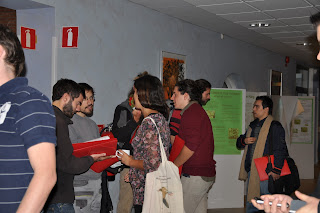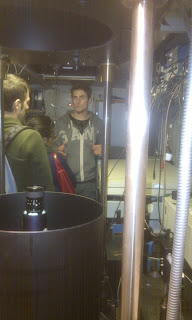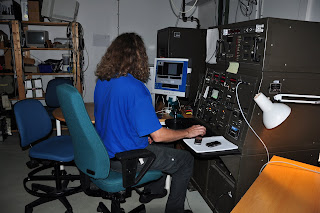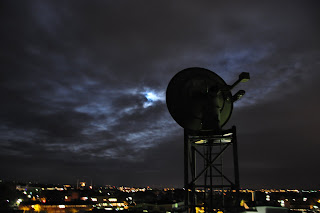MEDIA & OUTREACH
In 2011 our new webpage was released. Thanks again for all your help with input and ideas of content and design. We see this as our communication platform, which will continue to develop during the program period. Some of the new parts on the web-page were for instance: short science films produced in collaboration with journalist Joakim Lindhé (with support from Lars Salvius Stiftelsen to S. Åkesson). CAnMove members participated in a TV program for “Vetenskapens Värld” in Swedish Television with a program about bird tracking technology (project run by journalist Joakim Lindhé with financial support from FORMAS).
Other new actions was the field blog where CAnMove members reported from their field work, and a nation-wide moon watching project, which was run in collaboration with Swedish Ornithological Society (SOF). A spectacular Music show “Music of Migration” was part of the Migration course to which Lund University employees were invited.
COURSES & CONFERENCES
The international PhD student course “Ecology of animal migration” was this year coordinated by Rachel Muheim and Maria Eng Johnsson and attracted 36 participants, from many different countries. Thanks to the participants for their interesting contributions, active and friendly attitude during the course. You all make it worthwhile to invest the work in organizing the course! Many lecturers were invited and we are grateful for all high-quality and stimulating contributions to the course by visiting as well as Lund-based lecturers and student teachers! Thank You!
The internal CAnMove conference were held at Hotel Norregård in Falsterbo, at which two of the CAnMove Science Advisory Board members Prof. Marilyn Ramenofsky, Davis and Prof. Steven Repperert, Massachusetts were participating. The creative brainstorming event and feedback were most valuable, and the Steering committee is very pleased with all creative input to the program outline. Thanks to you all! Next conference will be held in early spring 2013.
A conference on animal migration at Sven Lovén Centre for Marine Research was held in June and was organized by the Royal Academy of Sciences (program coordinator Thomas Alerstam) to which some CAnMove members were invited. Much stimulating discussions and excellent organization, which we are much grateful for!
In August postdoc Sophia Engel organized a workshop on “insect flight”, while a workshop on “Beyond the climate envelope” was held in collaboration with BECC, the workshop was organized by Catherine Davey. The meeting was attended by members from both programs as well as by invited lecturers and was very stimulating for the discussions on effects of climate change. Well done!
POSTDOCS
Two new postdocs were hired within CAnMove – Sylvie Tesson (supervised by Karin Rengefors and Katarina Hedlund) with focus on Community metagenomics of Antarctic Protists and Brianne Addison (supervised by Helena Westerdahl, Dennis Hasselqvist and Jan-Åke Nilsson) who works with Immunological and physiological adaptations to migration.
Our first three postdocs (Sophia Engel, Ben Chapman and Miriam Liedvogel) have all ended their postdoc supported by CAnMove, but both Miriam and Ben have received funds to stay here for some more time, financed from other grants. And we are very happy that they have decided to stay and work within the CAnMove program for a bit longer. Most welcome!
INTERNAL INFORMATION
CAnMove has initiated a gender equality group, coordinated by Rachel Muheim, with support from a team of female scientists and students. The first meeting was held in December 2011.
Some CAnMove members were participating in the local running competition “Lundaloppet” in one of the two CAnMove teams. We aim at having more than 2 teams in spring 2012. We will continue with the CAnMove breakfasts and seminars in 2012.
We like to thank all members contributing the research and creativity of the CAnMove program! We are looking forward to a new stimulating year 2012 and would like to encourage you all to approach any of the employees or the steering committee or the coordinator with suggestions and ideas.
In time for the Christmas celebration this year, the special Volume of Oikos on partial migration is published, in which a number of review articles are included. This is as a result of the CAnMove workshop “Partial migration” organized by Ben Chapman and co-workers last autumn. We are very pleased with the outcome and congratulate Ben et al. for this successful publication!






















